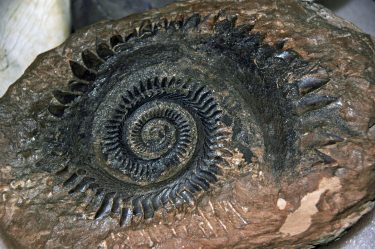
The largest extinction in Earth’s history marked the end of the Permian period, some 252 million years ago. Long before dinosaurs, our planet was populated with plants and animals that were mostly obliterated after a series of massive volcanic eruptions in Siberia.
Fossils in ancient seafloor rocks display a thriving and diverse marine ecosystem, then a swath of corpses. Some 96 percent of marine species were wiped out during the “Great Dying,” but what’s been debated until now is exactly what made the oceans inhospitable to life — the high acidity of the water, metal and sulfide poisoning, a complete lack of oxygen, or simply higher temperatures.
“This is the first time that we have made a mechanistic prediction about what caused the extinction that can be directly tested with the fossil record, which then allows us to make predictions about the causes of extinction in the future,” said Justin Penn, a UW doctoral student in oceanography, about new research published in Science from the University of Washington and Stanford University.
See also:
- Smithsonian: “How Did the ‘Great Dying’ Kill 96 Percent of Earth’s Ocean-Dwelling Creatures?“
- The Guardian: “The ‘great dying’: rapid warming caused largest extinction event ever, report says“
- Grist: “Climate change caused the “Great Dying,” aka the planet’s worst extinction“
- KUOW: “We’re headed for another mass extinction, says breakthrough UW study“
- The New York Times: “The Planet Has Seen Sudden Warming Before. It Wiped Out Almost Everything.“
- The Atlantic: “When a Killer Climate Catastrophe Struck the World’s Oceans“
- Geekwire: “How climate change choked ancient life to death — and why it could happen again“
- Mashable: “Extreme climate change suffocated nearly all ocean life 250 million years ago“
- Mother Jones: “A New Study About the World’s Worst Mass Extinction Should Make You Very Nervous for Our Future“
- The Seattle Times: “Global warming today mirrors conditions leading to Earth’s largest extinction event, UW study says“

